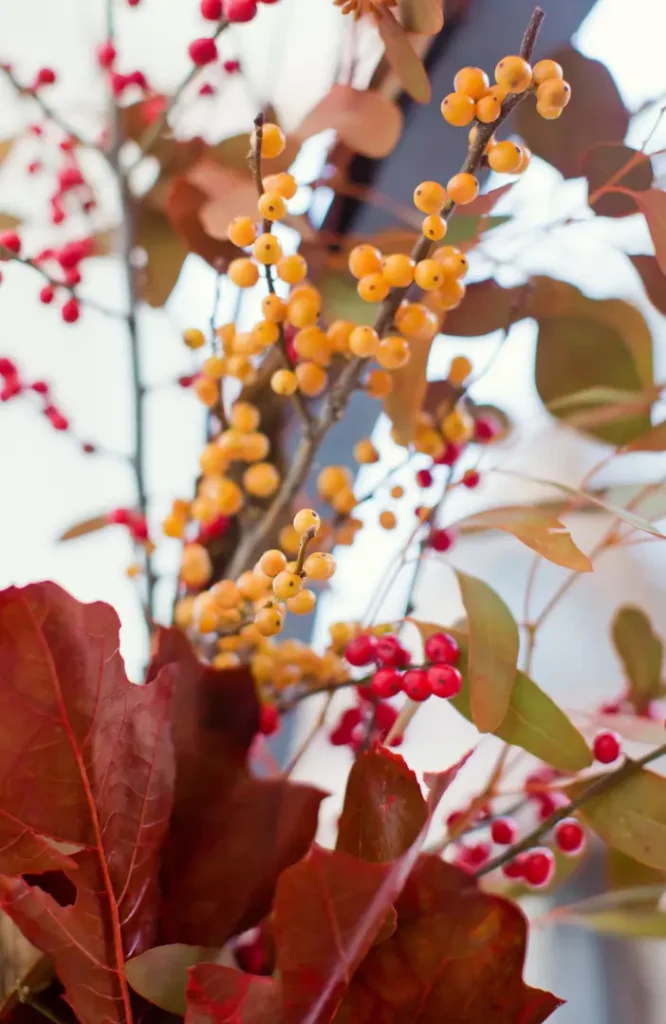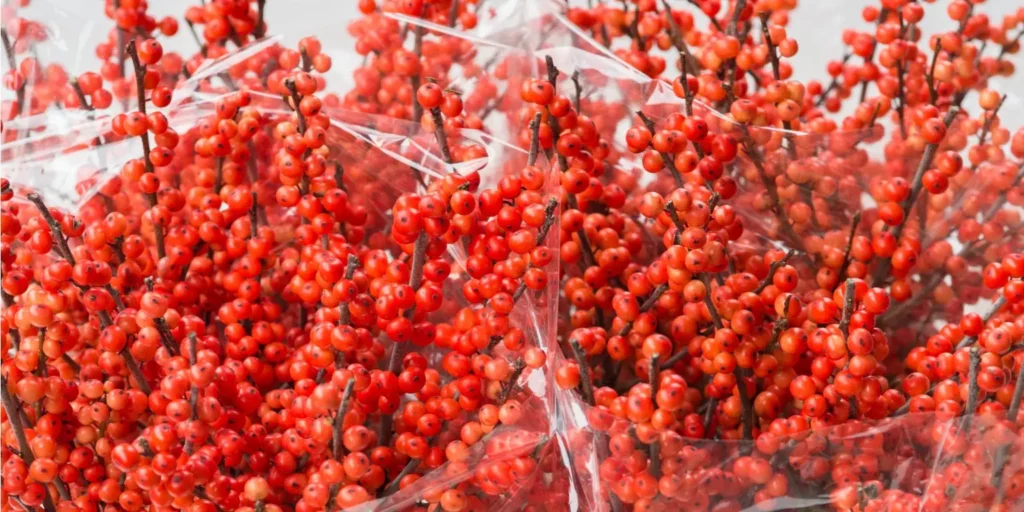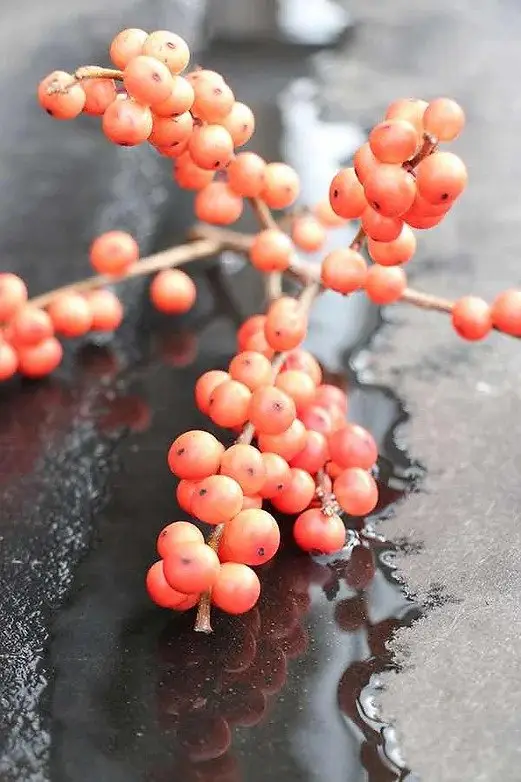Ilex
| Name: Ilex | Family: Aquifoliaceae | Type Plant: Evergreen shrub or small tree |
| Flowering time: May to June (small white flowers) | Best time to buy: Autumn or early spring | Max Height: 30-90 |
| Sun/Shadow: Partial shade to full sun |
Origin
Ilex, also known as holly, is a genus of over 400 species. The most common species used in floristry is Ilex verticillata, also known as Winterberry. Ilex is native to North America, Europe, and parts of Asia. It grows in woodlands and wetlands
Characteristics
Appearance: Ilex has striking red berries that grow on slender, often thorny branches. The leaves can be smooth or spiky depending on the variety.
Stem: Woody, with clusters of bright berries along the length.
Colour: The berries are usually red but can also be orange, yellow, or black, depending on the species.
Longevity: The berries stay vibrant and last for weeks, making them popular for winter arrangements.
Care
Water: Keep the stems well-hydrated by cutting them at an angle and placing them in fresh water. Change the water every few days.
Environment: Store in a cool place, away from direct sunlight and heat sources.
Berry Care: Be gentle with the berries to avoid damage. They can sometimes fall off if handled roughly.
Cutting the Stem: Recut the stems every few days to ensure water uptake.
Life Span: When cared for properly, Ilex can last up to two weeks in a vase.
Blooming time
Ilex plants bloom in late spring to early summer, but the berries appear and ripen in autumn.
A field of Ilex plants is always divided into two sections. This is because Ilex plants only produce berries every other year. So, one section will have berries while the other won’t. The berry-producing plants are female, and for every 50 to 100 female plants, there is one male plant. The male plant doesn’t produce berries but ensures that the female plants do. This method ensures a consistent annual harvest of Ilex berries.
Interesting Facts
After the stems are harvested, they are placed with their leaves under plastic sheets to make the leaves sweat off. Growing Ilex isn’t easy, as factors like temperature, sunshine, and rainfall greatly influence the crop. The process requires careful management to ensure a successful harvest.







